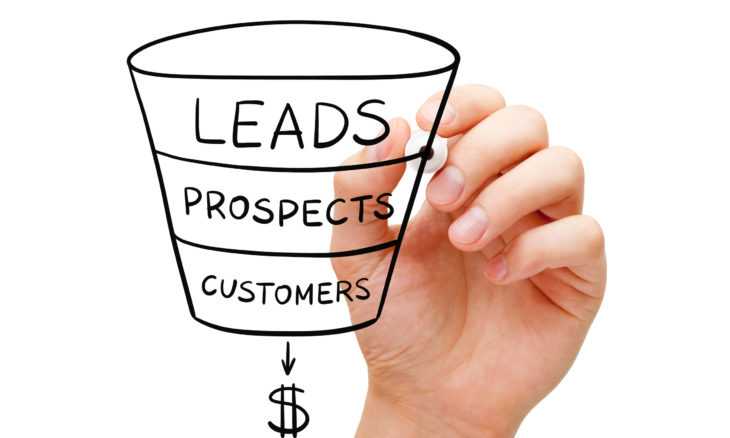Effective sales funnels are the most engaging—and effective—ways to increase your business. But, if your putting in a lot of effort and feel you can get more return, you’re not alone. Many businesses struggle with lead generation, qualifying leads and converting them to sales.
About 73% of a business’s potential leads aren’t sales-ready. This high number indicates that too many leads are pushed through the sales funnel before they’re ready to convert and make a purchase.
Finding and qualifying effective leads requires a consistent strategy. To ensure that your leads will convert, your sales funnel strategy should depend on three things:
- Limiting the number of steps in your funnel.
- Focusing on lead volume and not quality.
- Allowing sales and marketing to work together effectively.
Read on to learn the top 5 mistakes businesses make with sales funnels and how you improve upon them with your own business.
1. Your Sales Funnel is Too Complicated
If your sales funnel has too many steps, leads might opt out. To keep leads interested, have shorter steps and make it easy for leads to transition from one step to the next.
Sales funnels should have 6 stages or steps.
- Awareness: Introduce the product or service.
- Discovery: The lead becomes curious and wants to learn more.
- Evaluation: The lead evaluates your business and weighs their other options.
- Intent: The lead makes the decision to buy from you.
- Purchase: The lead is now a customer and you can ask for a referral and feedback.
- Loyalty: You can cross-sell other products and look for ways to keep your business top of mind with the customer.
Think through the fastest and most effective way to walk clients through these steps while still explaining the value you bring. Additionally, if you find you have other steps in your process, eliminate them or fold them into one of the above. Providing too much information can be worse than not enough. It may cause customers to get confused, view your product as complicated, and move on to a competitor.
2. Your Leads Aren’t Valid
When attracting leads, don’t focus strictly on volume. Building a sales strategy around unqualified leads can be frustrating. Often, leads generated by the marketing team may be too early stage. For example, if your marketing efforts include information that is surprising or attention-grabbing, you may get a large lead list, but they may not be interested in your product— they may just be driven to the site by the shocking information. If you include these numbers in your sales funnel calculations it may appear that your efforts are not working, or that you are seeing very little engagement, interest and success.
Ensure that you classify leads as either qualified or not, and then build strategies specifically around converting qualified leads. Keep content focused on drawing leads for sales, not viral content that only increases traffic for a short duration. This will allow you to focus on what is working for the target customer and remove some of the noise.
3. You’re Not Using the Right Metrics or KPIs
A lot of gaps can occur with sales funnels because you might not be measuring every stage of your funnel. These can be alleviated with better metrics and key performance indicators (KPIs). These help to outline where you’re losing leads and which steps are over- or under-performing. Effective metrics usually include:
- Reach for lead generation methods: If you have a marketing team dedicated to getting your company in front of prospects, one way to measure their success is to count the total reach of their marketing effort. Collect total reach numbers for social media efforts, emails, digital ads and other efforts. While these may not reach an audience that is totally qualified, increased awareness will help increase volume at the top of the funnel.
- Overall conversion rate: The overall conversion rate is the ratio of potential customers to the sales funnel that then become customers. This number shows how effective your team is from the top to the very bottom of the sales funnel. It is important to calculate both an overall number and by each stage. For example, understanding the conversion rate from first email to sign up is helpful, but it can be more actionable to understand the conversion rate between a first email and securing a demo with the customer.
- Average sale time: In order to forecast most effectively, it is helpful to count the days or weeks between a first connection and then the sale.
- LTV: Finally, in order to invest smartly in marketing and sales efforts, it is vital to understand the LTV or lifetime value of a customer. This will allow you to understand how much to can spend to acquire a customer.
4. Sales and Marketing Aren’t Communicating
To avoid gaps in the funnel, sales and marketing need to closely partner with each other. Both should carefully nurture leads with the same strategy through the funnel. If they don’t, leads will opt out and the funnel will remain broken.
One of the best ways to ensure the same process is being followed for each prospect is to use automation. Email automation applications like Mixmax can make it easy to create a set sequence of emails that go to prospects based on a timeline or on events. You can then build a drip campaign that covers an introduction, explanation of product benefits and ask for a demo meeting all automatically and over the course of a few weeks.
You can build on these sequences with rules as well. For example, you may only want to send a follow-up email if the client has opened the first email. Using rules and sequences, you can create a line of communication, so sales and marketing understand who is being reached, when, and with what information.
5. Sales Teams Are Hindering Marketing’s Initial Efforts
Waiting 30-minutes can decrease the odds a lead will qualify by 21-times. Hence, sales teams have to consistently follow-up with leads and nurture them through the funnel. Or, marketing’s efforts are wasted.
There are several different ways to engage a prospect nearly immediately to ensure leads aren’t abandoned. One way would be to integrate VoIP phones with customer resource management software, so a member of the CS team can monitor when a lead calls or when a sales rep reaches out to them and hop in to help if needed. Additionally, you can keep track of email correspondence with leads by using email tracking and following up when someone opens an email. Finally, if you are unable to offer 24-hour assistance, use automatic emails that let the customer know you have received the inquiry and will get back to them shortly.
Conclusion
Fixing a failing sales funnel can take time, but the good news is you can make effective changes that will improve your bottom line. Use the metrics and work on improving communications between sales and marketing. This, in turn, can help fix gaps with leads. You’ll also want to make sure you are working with qualified leads and not just focusing on lead volume. Doing so will help to increase your conversions.






